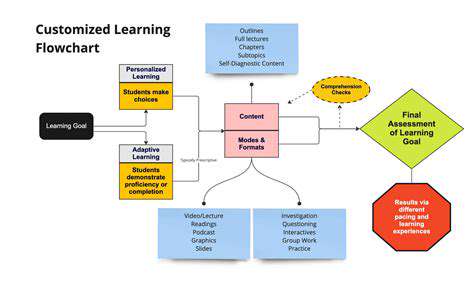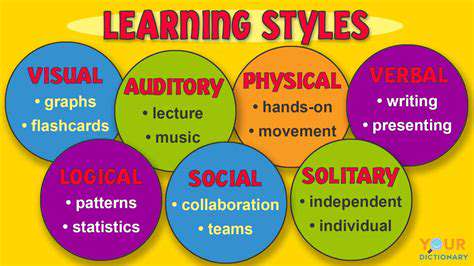Email Design Best Practices for Mobile Devices
Prioritizing Mobile-First Design
Mobile devices are now the primary way many people interact with email. This means that your email design needs to be optimized for smaller screens, touch interfaces, and varying resolutions. A mobile-first approach ensures that your email looks and functions flawlessly across all devices, from smartphones to tablets. This prioritization is critical for delivering a positive user experience and maximizing your message's impact.
Adaptive Design for a Seamless Experience
Adaptive email design allows your message to dynamically adjust to different screen sizes. This is achieved through responsive layouts that use fluid grids and flexible images. This approach ensures that the content remains readable and visually appealing regardless of the device being used. This means your email will be easily navigable and visually appealing on a wide range of screens, maximizing the likelihood of users engaging with your content.
Image Optimization for Fast Loading
Images are crucial for email marketing, but they can significantly impact load times if not optimized. Using compressed images and appropriate file formats (like WebP) is essential. Optimizing images reduces file sizes, leading to faster load times and a better user experience. This ensures your emails load quickly and efficiently, preventing users from abandoning your message due to slow loading times.
Clear and Concise Typography
Effective typography in email design is vital for readability. Choose fonts that are legible on various devices and ensure sufficient spacing between lines and paragraphs. Using a clear font hierarchy (different font sizes and styles for headings and body text) makes your email easy to scan and understand. This ensures that the message is clear and easy to read, no matter the size of the screen.
Intuitive Navigation for Easy Interaction
Navigating within an email should be intuitive and straightforward. Use clear calls to action (CTAs) with distinct buttons and links. Ensure that important information is easily accessible and that users can easily find what they need. Good navigation helps maintain engagement and guides users toward the desired action, whether it's making a purchase, signing up for something, or visiting a website.
Accessibility Considerations for All Users
Designing responsive emails requires considering the needs of users with disabilities. Ensure sufficient color contrast between text and background to maintain readability for users with visual impairments. Use alternative text for images to provide context for screen readers. Accessibility considerations make your email inclusive and accessible to everyone, fostering a positive experience for a wider audience. By following accessibility guidelines, you create a more inclusive environment for all users.
Testing Across Devices and Email Clients
Thorough testing is paramount to ensure your email design works flawlessly across different devices and email clients. Use various email clients, smartphones, and tablets to test the layout, functionality, and visual appearance. This meticulous testing helps identify and resolve any issues before the email goes live. This proactive approach ensures that your email design functions perfectly across various email clients and devices, maximizing the effectiveness of your message.

Mobile-Friendly Images: Displaying Visuals Effectively

Optimizing Image Sizes for Various Devices
Mobile-friendly images are crucial for a positive user experience. Large, high-resolution images can significantly slow down page load times on mobile devices, leading to frustration and decreased engagement. Therefore, optimizing image sizes for different screen resolutions and devices is essential. This involves using appropriate image formats like WebP, which often offers better compression than JPEG, reducing file sizes without sacrificing quality. Furthermore, using responsive image techniques allows the browser to automatically select the correct image size based on the device's screen resolution, ensuring optimal display and load times.
Employing tools and techniques for image compression is also important. Careful consideration of image dimensions and file formats can dramatically reduce the size of image files. This reduces the time it takes for the images to download, resulting in a better user experience. Choosing the right format and size for each image ensures that users on various devices can access the images quickly and efficiently.
Responsive Image Techniques for Seamless Viewing
Implementing responsive image techniques is paramount for a seamless user experience across different devices. Responsive images dynamically adjust their size and resolution based on the user's screen size, ensuring that the images are displayed correctly and efficiently. This approach optimizes the image display for a wide range of devices, from smartphones to tablets and desktop computers. Responsive images significantly improve page load times, especially on mobile devices, leading to a more engaging user experience.
Using the srcset attribute and sizes attribute is crucial for telling the browser which image to load for different screen sizes. This allows for a more optimized image delivery process. Employing these techniques enables the browser to choose the most appropriate image for the user's device, ensuring optimal visual quality and performance.
Image Formats and Compression for Speed and Quality
The choice of image format significantly impacts the file size and quality of the image. Formats like WebP offer superior compression compared to JPEG, resulting in smaller file sizes without a noticeable loss in quality. Leveraging these formats is key to improving page load times and enhancing the overall user experience. Careful consideration of image compression techniques is also essential, as lossy compression can sometimes lead to a perceptible decrease in image quality. Employing appropriate compression techniques helps to maintain quality while reducing file size.
Optimizing image formats is a crucial step in ensuring a swift and quality-rich user experience for all users. Choosing the correct image format and applying appropriate compression techniques is essential for achieving optimal website performance.
Read more about Email Design Best Practices for Mobile Devices
Hot Recommendations
- Attribution Modeling in Google Analytics: Credit Where It's Due
- Understanding Statistical Significance in A/B Testing
- Future Proofing Your Brand in the Digital Landscape
- Measuring CTV Ad Performance: Key Metrics
- Negative Keywords: Preventing Wasted Ad Spend
- Building Local Citations: Essential for Local SEO
- Responsive Design for Mobile Devices: A Practical Guide
- Mobile First Web Design: Ensuring a Seamless User Experience
- Understanding Your Competitors' Digital Marketing Strategies
- Google Display Network: Reaching a Broader Audience











